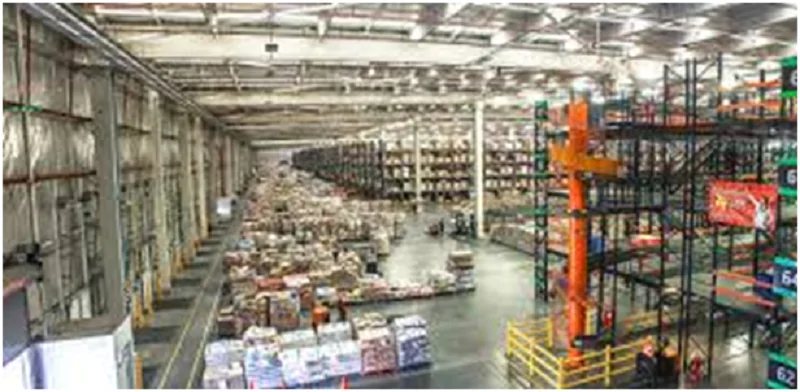Common Warehouse Accidents and How to Prevent Them

Hi, I am Betty Knight, Owner of this site! I…
More often than not, warehouse safety is taken for granted, despite the fact that warehouses are more prone to mishaps. And I’m not even talking about facilities that handle hazardous goods.
If you feel complacent with your warehouse’s existing safety measures, you might want to think again. As per the US Department of Labor, over 25% of warehouse workers get injured in a slip and fall incident. And this is just the tip of the iceberg.
As a warehouse owner, you want your employees to be productive and not bed-ridden. Also, workplace injuries often have legal implications that might cost you way more than fixing the problem that caused the injury in the first place. We are going to further explore some common warehouse accidents and find out more about how to avoid them, for instance by using dangerous goods storage containers to minimize the risk of exposure to harmful chemicals.
Here are 5 common warehouse accidents and how to prevent them
#1 Slip and Fall
Wet floors, clutter, stray cords, spills, etc. are the main culprits of slip accidents. Also, uneven floors, elevated seams, and objects on the shelf sticking out are the hottest tripping spots in the warehouse, which could be easily prevented by installing warning signs or floor signs to alert workers to the lurking danger. If certain areas in your warehouse are inevitably wet, non-skid matting can offer the desired traction and wear resistance to heavy foot traffic.
And when it comes to working at awkward heights, outdated safety gear or lack thereof can cause fall accidents which can be backbreaking, literally. Make sure stairways have proper railings and employees working on an elevated work platform are equipped with adequate gear and training to prevent a fall.
For when a fall does happen, it’s important to have procedures in place as a means of gauging the level of severity defining a given injury–how do you get ahead of such an issue? Find a doctor who is reliable, and keep them on some sort of retainer for when accidents happen. They will happen; it’s not an issue of “if”, but “when”. One of the most common injuries involves knees, so having a good knee injury doctor available makes a lot of sense. Find the best solutions for your particular warehouse in conjunction with injury likelihoods.
#2 Equipment failure
A warehouse is a dynamic system of complex machinery that operates day in day out. Machines tend to break down. And sometimes, a breakdown can create a ripple effect causing damage to the goods, property, or the employees working around it.
Therefore, it is important to get your equipment serviced timely and make sure the older ones aren’t being used beyond their limits or lifespan.
Larger warehouses must invest generously in fleet maintenance, which mainly comprises forklift trucks. From forklift transmission to the motor and other mechanical components, make sure everything is in proper working order.
#3 Exposure to hazardous elements
Harmful chemical fumes, propane, or battery acid are some of the hazardous substances that your workers may be exposed to while working. Make sure they are protected and prepared beforehand by mandating the use of safety gloves like Unigloves, face shields, masks, and respirators, if necessary, to minimize exposure and maximize safety.
Ensure adequate ventilation to let chemical fuels or gas leaks escape the building quickly. Visit TerraBloom for the perfect ventilation for your building.
#4 Musculoskeletal Injuries
This is something that can leave your workers ailing for the rest of their lives. Musculoskeletal injuries are caused by lifting heavy goods with a poor stance. Not only will your employees experience early fatigue but they might as well lose their strength to lift gradually.
Educate your material handling workers about the significance of ergonomics and how they can benefit from it, let alone prevent an injury. For forklift operators who spend extended hours behind the wheel, get a comfortable seat backrest or anti-vibration seat cushions to make the ordeal of driving a bit more bearable.
#5 Heavy Equipment Accidents
Heavy equipment accidents are spine-chilling and fatal. A collision between the forklift and pedestrians, conveyor belt collapsing or a free-falling elevator are some of the heavy equipment accidents that must be prevented at all costs. Install barricades to separate foot traffic from forklift operations. Maintain conveyor systems and elevators in good condition with regular greasing and bearing replacement.
The best part is you don’t have to spend a fortune to effect these preventative measures and make your warehouse a safe, productive environment to work in. In addition, use safe steel doors to protect both your warehouse and staff from unpredictable cases as robbery attempt or fire.
What's Your Reaction?
Hi, I am Betty Knight, Owner of this site! I am a 'nearing 30-year-old', happily married to 1 awesome man. We live in the beautiful tourist town of Franklin NY.



